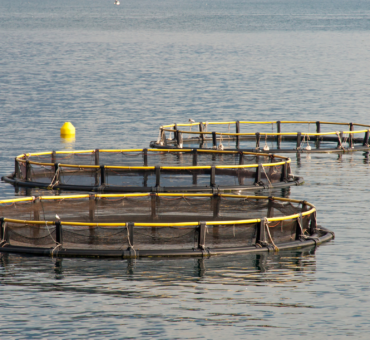Channelkeeper recently joined the Center for Food Safety, other environmental organizations, fishing groups, and the Quinault Indian Nation in suing the U.S. Army Corps of Engineers over its issuance of Nationwide Permit 56, which authorizes the development of finfish farming structures in state and federal waters. We are challenging that the Nationwide Permit was approved without a thorough analysis of its potential detrimental impacts on our ocean ecosystems, water quality, public health, fishing communities, and endangered and threatened species.
Nationwide Permit 56 allows the installation of cages, net pens, anchors, floats, buoys, and other structures in marine and estuarine waters over the outer continental shelf. It’s the primary program that will be used to permit all future finfish aquaculture development in federal waters throughout the United States. However, the groups who have filed the legal action are concerned that the U.S. Army Corps of Engineers skirted mandatory environmental review processes when it issued this permit. We claim that the agency failed to consult, as required by law, with the U.S. Fish and Wildlife Service and the National Marine Fisheries Service, as about potential effects on threatened and endangered species protected under the Endangered Species Act, nor consult on the impacts to Essential Fish Habitat under the Magnuson-Stevens Act. Further, the Army Corps lacks the legal authority to take this step in the first place without new authority from Congress, which it has not gotten.
The Nationwide Permit 56 originated from a Trump-era executive order promoting the rapid expansion of industrial marine aquaculture facilities under the guise of addressing pandemic-related food insecurity. Federal officials have begun identifying locations as potential sites for commercial aquaculture operations. The Santa Barbara Channel—along with areas in the Gulf of Mexico and waters off Marina del Rey, California—was selected by the National Oceanic and Atmospheric Administration as one of the first areas to assess for future aquaculture development. The Santa Barbara Channel currently has two active aquaculture projects along the coastline.
Certain types of aquaculture projects, such as those for shellfish and seaweed, generally may have benefits that outweigh the drawbacks. However, offshore aquaculture operations for finfish (such as tuna or tilapia) present significant risks to the environment. These include, but are not limited to:
- water quality impairment from dead fish, fecal waste, and antibiotics;
- spread of disease that can impact populations of wild fish caught by commercial, recreational, and subsistence fishermen;
- escape of farmed fish into the natural environment, risking the genetic integrity of wild populations; and
- depletion of small fish populations that are used as feed for farmed fish and thus, less available for wild fish, birds, and marine life.
In addition, there is currently no regulatory program in place to adequately oversee aquaculture operations in federal waters or strong standards to protect the marine environment from the impacts of finfish aquaculture.
By signing on to this lawsuit, Channelkeeper hopes to ensure that all appropriate precautions and measures are in place to protect the Santa Barbara Channel from the potentially destructive impacts of industrial, offshore finfish aquaculture.

